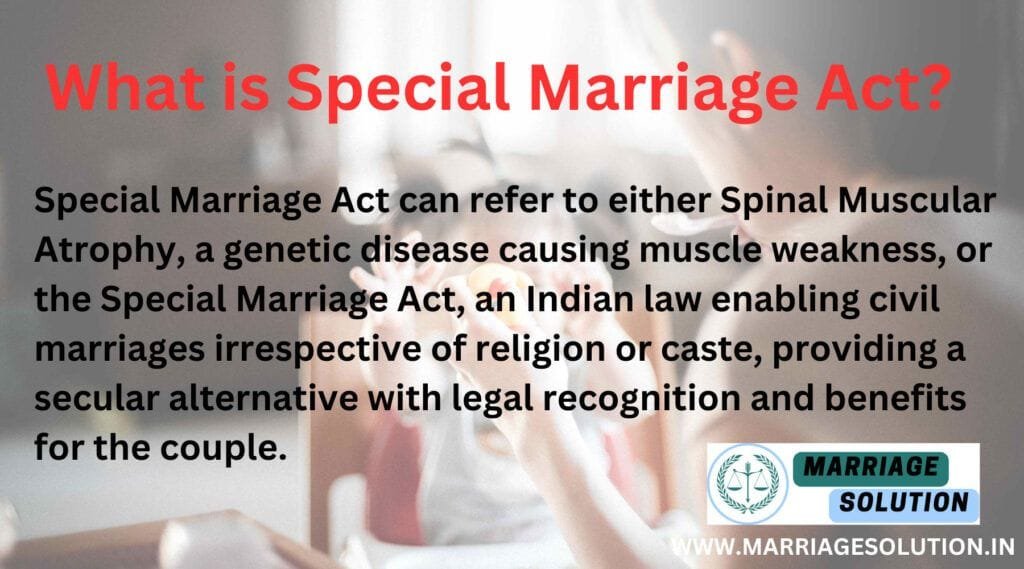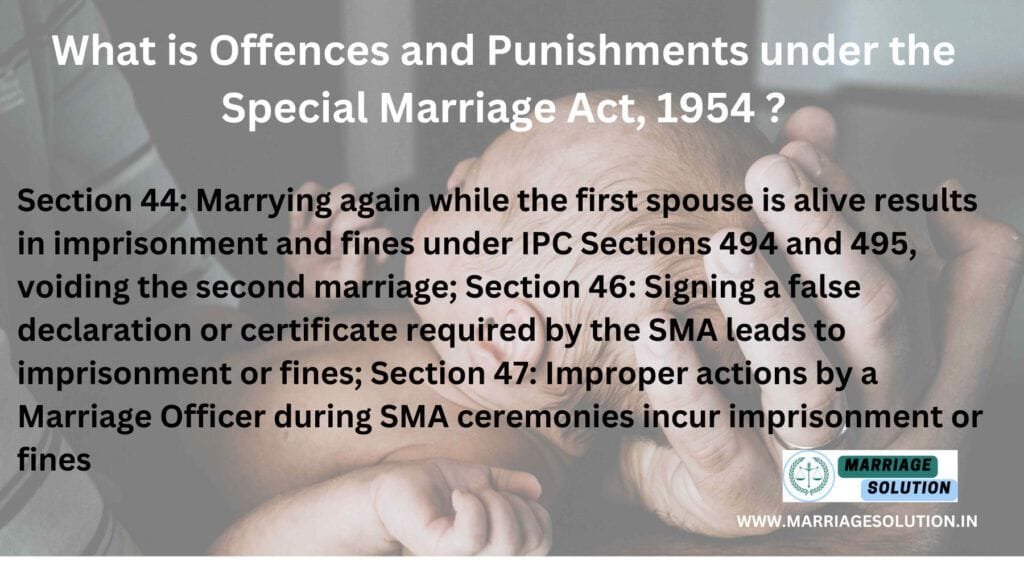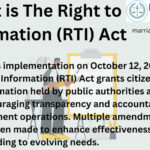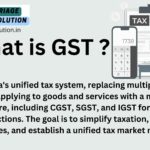- Special Marriage Act 1954
- Introduction
- Amendment Act 32 of 1963(under the Special Marriage act)
- Amendment Act 68 of 1976(under the Special Marriage act)
- Amendment Act 50 of 2003(under the Special Marriage act)
- Registration of marriage under special marriage act
- Documents required for special marriage act
- Offences and punishment under the Special Marriage Act 1954
- Special marriage act benefits
- Difference between the Hindu Marriage Act and Special Marriage Act
- If you require assistance with court or any other Cases.
- Women Helpline: Centre Government
Special Marriage Act 1954

Introduction
special marriage act became law on 9th Oct 1954
1)Applicable :Regardless of one’s religion or conviction, this act is legitimate for all Indian nationals living either locally or globally.
2)Conditions for Marriage:
2.1)legal age of marriage in India: 18 years for females and 21 years for guys.
2.2)For a union with be viewed as legitimate, it is fundamental that the two parties give their assent.
3)Marriage Notice:As per this demonstration, people who intend to marry should give a notice to the marriage official inside the purview in which something like one of them has stayed for an assigned term (habitually 30 days). This declaration is made openly available as a chance for any potential protests.
4)Objections:During the predefined notice period, issues with the planned marriage might be raised by any person. The marriage officer investigates these objections and resolves them according to the provisions of the act.
Enlistment: Parties married under this act enjoy the same rights and are subject to the same obligations as parties married under any other law in India. This includes rights related to inheritance, property ownership, and obligations such as maintenance and support
Commitments and Freedoms:
Couples who marry under this act have indistinguishable honors and obligations as couples wedded under some other regulation in India, including legacy freedoms, ownership of property, and responsibilities like monetary help.
Division and End of Marriage: Under the demonstration, separation and disintegration of marriage can be gotten by parties who meet specific circumstances and follow legitimate methods as specified.
Amendment Act 32 of 1963(under the Special Marriage act)
In India, the Special Marriage Act of 1954 was updated by Amendment Act 32 of 1963. . This change made different enhancements to all the more likely serve those looking for marriage under this regulation’s arrangements. Set forth plainly, it refined and improved the first demonstration in various ways.
1)Definitions: The alteration to the In India, the Special Marriage Act of 1954 was updated by Amendment Act 32 of 1963. Marriage Act offered better definitions for specific wordings, subsequently forestalling any misconception and guaranteeing complete perception of the law.
2)Additional Requirements for Marriage: The Marriage Act presently incorporates added requirements that couples need to satisfy to seal the deal. Among these prerequisites are age limitations, appropriate psychological wellness status, and confirmation of single status for the two people included.
3)Process: The alteration improved on specific methods connected with marriage under the demonstration. Such changes could relate to diminished holding up periods or modifications in essential documentation for couples looking for conjugal association.
4)Legal Clarity The principal objective of Lawful Clearness was to dispose of all questions or logical inconsistencies present in the first regulation, improving perception and consistence with lawful guidelines.
5)Adapting to Society: to stay appropriate as cultural standards develop, the Extraordinary Marriage Act might require changes through revisions. Such switches could incorporate carrying regulation around to-date with contemporary family arrangements and social traditions.
6)Protecting Rights The demonstration potentially involved measures pointed toward reinforcing the protections for people’s privileges who get hitched under it, for example, guidelines with respect to separation and responsibility for or legacy.
7)Improving Implementation: To upgrade the execution cycle, arrangements might have been included the revision to work with uniform and impartial implementation of the Extraordinary Marriage Act all through different locales of India. This step would ensure that a fair consequence is given impartially.
Amendment Act 68 of 1976(under the Special Marriage act)
The Amendment Act’s main focus is on: In 1976, the Amendment Act 68 reformed the Hindu Marriage Act of 1955 and was commonly referred to as the Marriage Laws (Amendment) Act. Changes in Key Implemented:
1)Introduction: The inclusion of mutual consent as a valid reason for divorce was brought about by an amendment to Section 13B. In accordance with this provision, couples who have lived apart for one year or longer and are in agreement regarding the termination of their marriage can apply to the district court to obtain a decree of divorce.
2)legitimacy of children: was the topic addressed by this act, specifically those born from marriages that have been declared null and void. Section 16 elucidated that regardless of when the decree stating the marriage’s nullity was granted, children originating from such unions would still be deemed legitimate. Impact in General: mutually consent to divorce :The Amendment Act introduced a simplified method for couples who mutually consent to divorce, presenting an option that deviates from the traditional contested divorces.
2)children’s rights :The safeguarding of children’s rights ensured the protection of their entitlements even if they were born from marriages that could be nullified on technical grounds. The objective of this breakdown is to offer a precise comprehension about the Amendment Act 68 of 1976 and its importance in relation to Indian marriage laws. For acquiring more comprehensive legal knowledge, it would be wise to refer legal resources or contact an expert family law attorney for guidance.
Amendment Act 50 of 2003(under the Special Marriage act)
Breakdown of Marriage: The amendment added one more game plan to the Hindu Marriage Act, allowing couples to search for discrete if their marriage has horrendously isolated, regardless of what the length of parcel.
Affirmation of Segment: It honestly saw couples who have been living freely for a specific period, enabling them to request of for legitimate partition on the grounds of unrecoverable breakdown of marriage.
Division Framework: The revision streamlined the division cycle for couples experiencing sad breakdown of marriage, simplifying it for them to get a partition request.
Security of Honors: While working with isolated, the correction ensured the confirmation of the honors and interests of individuals included, staying aware of fairness in the lawful activities.
Worked on Legitimate Clarity: It expected to convey clearness to the authentic framework including detachment under the Hindu Marriage Act, diminishing ambiguity and dealing with perception of the law.
Keeping an eye on Social Changes: The modification saw the creating social genuine elements and the prerequisite for a more safe system towards isolated, reflecting contemporary points of view towards intimate associations.
Enabling Pleasant Courses of action: By perceiving unrecoverable breakdown of marriage as a genuine ground for independent, the revision encouraged couples to search for friendly objectives to intimate discussions, propelling congruity and shared respect.
In frame, Remedy Act 50 of 2003 modernized the Hindu Marriage Act by introducing game plans that perceive lost breakdown of marriage as a veritable support for discrete, in this way working with smoother and more impartial crumbling of intimate associations.
Registration of marriage under special marriage act
The Amendment Act’s main focus is on: In 1976, the Amendment Act 68 reformed the Hindu Marriage Act of 1955 and was commonly referred to as the Marriage Laws (Amendment) Act. Changes in Key Implemented:
1)Introduction:
The inclusion of mutual consent as a valid reason for divorce was brought about by an amendment to Section 13B. In accordance with this provision, couples who have lived apart for one year or longer and are in agreement regarding the termination of their marriage can apply to the district court to obtain a decree of divorce.
2)legitimacy of children: was the topic addressed by this act, specifically those born from marriages that have been declared null and void. Section 16 elucidated that regardless of when the decree stating the marriage’s nullity was granted, children originating from such unions would still be deemed legitimate. 3)Impact in General: mutually consent to divorce :The Amendment Act introduced a simplified method for couples who mutually consent to divorce, presenting an option that deviates from the traditional contested divorces.
4)children’s rights :The safeguarding of children’s rights ensured the protection of their entitlements even if they were born from marriages that could be nullified on technical grounds. The objective of this breakdown is to offer a precise comprehension about the Amendment Act 68 of 1976 and its importance in relation to Indian marriage laws. For acquiring more comprehensive legal knowledge, it would be wise to refer legal resources or contact an expert family law attorney for guidance.
Documents required for special marriage act
- Application Form: Completed and signed by both parties.
- Proof of Age and Identity:
- Aadhaar card
- Passport
- Birth certificate
- Driver’s license
- Proof of Residence:
- Aadhaar card
- Utility bills
- Rent agreement
- Passport-sized Photographs: Recent photographs of both parties.
- Marriage Notice: Notice of intended marriage duly filled and signed by both parties.
- Witnesses: Three witnesses with valid identification.
- Divorce Decree or Death Certificate (if applicable):
- In case of divorce, a decree absolute.
- In case of widowhood, a death certificate of the deceased spouse.
Offences and punishment under the Special Marriage Act 1954

- Bigamy (Section 44):
- Offense: Marrying again while your first spouse is still alive.
- Penalty: Imprisonment and potential fine as per the Indian Penal Code (IPC) Sections 494 and 495. These sections can lead to up to seven years in jail and a fine.
- Additional Consequence: The second marriage performed under the SMA becomes null and void.
- False Declaration or Certificate (Section 46):
- Offense: Knowingly or unknowingly signing a false declaration or certificate required under the SMA. This could involve providing false information about marital status, age, etc.
- Penalty: Imprisonment for up to three years and/or a fine.
- Wrongful Action by Marriage Officer (Section 47):
- Offense: A Marriage Officer performing a marriage ceremony under the SMA when they shouldn’t have (due to legal reasons) or failing to follow proper procedures.
- Penalty: Imprisonment for up to three years and/or a fine.
Special marriage act benefits
- Flexibility in Ceremony:
- Couples have the flexibility to customize their marriage ceremony according to their preferences, allowing them to incorporate cultural traditions or personal beliefs as desired.
- Ease of Compliance:
- The requirements for marriage registration under the Special Marriage Act are relatively simple and straightforward, making it easier for couples to comply with legal formalities.
- Recognition Across Borders:
- Marriages registered under the Special Marriage Act are recognized internationally, facilitating ease of travel and residency for spouses in foreign countries.
- Protection of Privacy:
- The Act ensures the privacy of couples by not requiring them to disclose personal religious beliefs or undergo religious ceremonies, thereby respecting their autonomy and privacy.
- Prevention of Social Stigma:
- By providing a legal framework for interfaith and inter-caste marriages, the Special Marriage Act helps combat social stigma and discrimination against couples in unconventional unions.
- Empowerment of Women:
- The Act empowers women by providing legal safeguards such as the right to seek divorce and protection against arbitrary practices like forced marriages, thereby promoting gender equality and empowerment.
- Fostering Social Integration:
- Marriages under the Special Marriage Act promote social integration and cohesion by encouraging individuals from diverse backgrounds to come together and form families based on mutual respect and understanding.
Difference between the Hindu Marriage Act and Special Marriage Act
| Aspect | Hindu Marriage Act (HMA) | Special Marriage Act (SMA) |
|---|---|---|
| Applicability | Applies to marriages among Hindus, Buddhists, Jains, and Sikhs, as well as those who have converted to these religions. | Applies to marriages irrespective of religion, caste, or creed. |
| Religious Ceremony | Requires the performance of traditional Hindu rituals and ceremonies, including the Saptapadi (seven steps around the sacred fire). | Allows for a civil marriage ceremony conducted by a Marriage Officer without religious customs or rituals. |
| Eligibility | Both parties must be Hindu, Buddhist, Jain, or Sikh by religion. | Allows couples from any religion or belief system to marry. |
| Notice of Intended Marriage | Notice must be given to the local Registrar of Marriages at least 30 days prior to the intended marriage date. | Requires notice to be given to the Marriage Officer at least 30 days in advance, publicly inviting objections. |
| Objections to Marriage | Objections can be raised by any person against the marriage within the 30-day notice period. | Objections can be raised by any person within the 30-day notice period, but the grounds for objection are specified in the Act. |
| Solemnization | Solemnized by a priest or other authorized religious authority according to Hindu rituals. | Solemnized by a Marriage Officer in the presence of three witnesses without any religious ceremonies. |
| Inheritance and Succession Rights | Spouses have inheritance and succession rights as per Hindu personal law. | Spouses have inheritance and succession rights as per the Indian Succession Act, 1925. |
| Grounds for Divorce | Specific grounds for divorce, such as adultery, cruelty, desertion, conversion, or incurable mental illness. | Allows divorce by mutual consent or on grounds of adultery, cruelty, desertion, conversion, mental illness, or incurable diseases. |
| Legal Recognition | Marriage is legally recognized under Hindu personal law. | Marriage is legally recognized under the Special Marriage Act. |
If you require assistance with court or any other Cases.
court or any other Dowry-related issues, our Home – MarriageSolution.in: Your Trusted Partner in Family Legal Matters. Law Services, IPC Section blog, Expert Advice, court cases lawyer help. website may prove helpful. By completing our enquiry form and submitting it online, we can provide customized guidance to navigate through the process effectively. Don’t hesitate to contact us for personalized solutions; we are here to assist you whenever necessary!
Women Helpline: Centre Government
https://www.ncwwomenhelpline.in This official website provides valuable information and resources related to labour laws, policies, and initiatives in India. Visitors can access a wide range of information
Who can marry under Special Marriage Act?
Any individual who is a citizen or national of India and is of legal age, typically 18 years for females and 21 years for males, unmarried, and mentally sound.
Benefits of Special Marriage Act marriage?
The Special Marriage Act, being secular, permits interfaith marriages. It offers a straightforward procedure, ensuring a legally recognized marriage with associated rights.
Dissolving an SMA marriage?
Yes, dissolution of marriage by mutual consent is feasible under alternative legal statutes.
What is Special Marriage Act ?
Indian law enabling civil marriages regardless of religion or caste, providing a legal framework for secular ceremonies.
What is the procedure for marriage registration under the SMA?
The procedure typically involves giving notice of intention to marry to the Marriage Officer, inviting objections (if any), solemnizing the marriage, and obtaining a marriage certificate.
- AFSPA Act
 AFSPA act mean Armed Forces Special Powers Act (AFSPA) grants special powers to the Indian Armed Forces in areas classified as “disturbed” due to significant insurgency or internal disturbances.
AFSPA act mean Armed Forces Special Powers Act (AFSPA) grants special powers to the Indian Armed Forces in areas classified as “disturbed” due to significant insurgency or internal disturbances. - Right to Information RTI act :Your Comprehensive Guide (Part 1)
 The Right to Information (RTI) Act : Explore the essence of the Right to Information (RTI) Act through this symbolic image. The image features legal documents, emphasizing the importance of transparency and accountability in governance. The scales of justice represent the balance achieved through the citizens’ right to access information.
The Right to Information (RTI) Act : Explore the essence of the Right to Information (RTI) Act through this symbolic image. The image features legal documents, emphasizing the importance of transparency and accountability in governance. The scales of justice represent the balance achieved through the citizens’ right to access information. - What is Article 371 of Indian Constitution ?Article 371 of the Indian Constitution grants special provisions to specific states and regions within India, addressing their unique historical, social, and cultural circumstances. These provisions aim to accommodate diverse needs and protect cultural identities within the constitutional framework.
- Indian Labour law : Your Comprehensive Guide (Part 1)
 The purpose of labour laws is to safeguard employees and guarantee equitable treatment at the workplace, encompassing aspects such as remuneration, security, and perks. These regulations establish a secure ambiance by imposing minimum wage requirements, ensuring factory safety measures are implemented effectively while granting rights like maternal leave entitlements. Abiding by these principles promulgates an impartial work culture encapsulating upright conduct; thereby cultivating conducive surroundings for progressive development.
The purpose of labour laws is to safeguard employees and guarantee equitable treatment at the workplace, encompassing aspects such as remuneration, security, and perks. These regulations establish a secure ambiance by imposing minimum wage requirements, ensuring factory safety measures are implemented effectively while granting rights like maternal leave entitlements. Abiding by these principles promulgates an impartial work culture encapsulating upright conduct; thereby cultivating conducive surroundings for progressive development. - GST :Your Comprehensive Guide (Part 1 – Understanding the Basics)
 The Goods and Services Tax (GST) is like a big change in how we pay taxes in India. It started on July 1, 2017, and it’s here to simplify things. Before GST, we had many different taxes, and it could get confusing. Now, with GST, it’s like combining all those taxes into one. The idea is to make taxes more straightforward, clear, and fair for everyone. It applies to almost everything we buy or sell, and it’s helping India’s businesses and economy work better together. So, GST is not just a tax change; it’s a step towards making things simpler and better for all of us.
The Goods and Services Tax (GST) is like a big change in how we pay taxes in India. It started on July 1, 2017, and it’s here to simplify things. Before GST, we had many different taxes, and it could get confusing. Now, with GST, it’s like combining all those taxes into one. The idea is to make taxes more straightforward, clear, and fair for everyone. It applies to almost everything we buy or sell, and it’s helping India’s businesses and economy work better together. So, GST is not just a tax change; it’s a step towards making things simpler and better for all of us.
